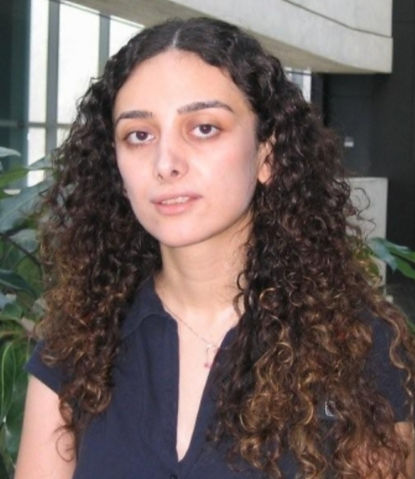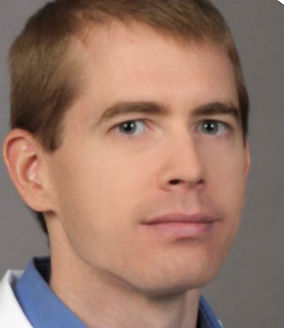Teaching the laws of the Universe to those who one day rewrite them
Speaker Series
Over the past year, we’ve been incredibly fortunate to host brilliant scientists from around the world who generously volunteer their time to speak with our students, sometimes after long days of teaching, research, and family responsibilities. These talks have inspired our kids, sparked deep curiosity, and brought physics to life in ways few textbooks ever could.
If you joined a session and would like to express your appreciation to our past speakers, please use this form to show your gratitude. You could also add a question that you may have. I make sure to relay that to them!
Prof. David Kagan
May 21th 2025, 7:00 PM EST
Prof. David Kagan is a Professor of Physics at the University of Massachusetts Dartmouth, where he has taught since 2012. He holds a Ph.D. in Theoretical and Mathematical Physics from the University of Cambridge, where he specialized in quantum integrable systems. With academic roots also at Columbia University, David's primary interests lie at the intersection of quantum mechanics, general relativity, and string theory.

Abstract:
How To Imagine A Quantum Reality
One hundred years ago, a revolutionary new theory – quantum mechanics – overturned centuries-old ways of thinking about the world. Quantum theory suggested that we can only describe the results of measurements, and that we must abandon any meaningful attempt to picture the microscopic universe. Despite its spare, stripped-down view of reality, quantum mechanics is the single-most accurate physical theory we have ever conceived. Numerous experiments confirm its startling predictions, and its ideas permeate modern technology. Recently, we have started applying quantum thinking to computation, revealing fascinating new ways to formulate algorithms and explore the frontiers of what computation can achieve.
Why has quantum theory left us in this vexing state: enriching our capacity to affect the world while diminishing our ability to understand that very same world? I will describe how ideas from quantum information, computation, and philosophy help shed new light on these old debates and provide new hopes for developing a more satisfying picture of our quantum reality.
Ava Zarkesh
May 15th 2025, 7:00 PM EST

Ava is a high school sophomore who has been programming quantum computers for several years. Her quantum computing journey complements her background in AI, where she has years of practical experience, even serving as a Teaching Assistant for the Caltech Intro to Machine Learning Bootcamp. She is particularly fascinated by the potential of quantum computing to advance AI systems through quantum machine learning algorithms.
This interactive workshop introduces students to quantum computing, starting with the fundamental concepts of qubits and superposition. Students will learn about key quantum gates (X, H, CNOT, and Z), explore the fascinating hardware that powers quantum computers, and discover how quantum algorithms, such as Grover's search, can solve problems faster than classical computers. The session concludes with a live demonstration of a quantum simulator, allowing students to see quantum computing principles in action.
Prof. Niayesh Afshordi
March 5th 2025, 7:00 PM EST
Professor Niayesh Afshordi is an Astrophysicist. He is a professor in the Astrophysics and Gravitation Group at the Department of Physics and Astronomy, University of Waterloo, and a founding faculty member at the Waterloo Centre for Astrophysics (WCA).
Check out his latest book, "The Battle of the Big Bang."

Abstract:
The Battle of the Big Bang: How the Universe Began (and Why It’s a Big Mystery!)
Have you ever wondered how the universe began? Scientists have been trying to solve this mystery for centuries, and the story is full of big ideas, surprising discoveries, and even a few battles! In this talk, we’ll explore the Big Bang, the leading theory of how everything started, and the challenges it faces. Could there be another way the universe was born? What can black holes and the tiniest particles tell us about the beginning of time? Join me on a journey through space and time as we uncover the biggest cosmic questions—together!

Sirish Subash
November 15th 2024, 7:00 PM EST
Our very own Sirish Subash (author, inventor, and this year's 3M Young Scientist Challenge winner) is returning to Physics Literacy for Kids for another exciting Q&A session. Don't miss this opportunity to learn from him! Submit your questions in advance to:
azadeh@physicsliteracyforkids.com
Prof. Ghazal Geshnizjani
September 11th 2024, 7:00 PM EST
Prof. Gheshnizjani has a PhD in physics from Brown University in 2005, followed by postdoctoral positions at the University of Wisconsin-Madison, Perimeter Institute, and the University at Buffalo. She is a faculty member at the Perimeter Institute for Theoretical Physics and the University of Waterloo. She is a cosmologist and studies topics like the early universe, the cosmological Big Bang, and some topics in the late universe, such as dark energy models.

Abstract
``How did our universe begin?" is one of the oldest questions in human history. As theoretical cosmologists, our job is to create a mathematical picture of the early universe that explains observations on all scales. In the past thirty years, there has been remarkable progress in technology for precision astrophysical observations and in refining mathematical methods to explain them. For example, we can now measure ripples in space-time geometry with incredible precision, down to one part in a million. We also have advanced frameworks like general relativity and quantum theories to describe these early universe ripples. Despite these achievements, some puzzles remain unsolved, such as the Big Bang Singularity problem. We will explore the early universe and its mysteries on this journey back in time.

Prof. Matthew Headrick
June 26th 2024, 6:30 PM EST
Prof. Headrick's research interests lie in string theory and related areas of quantum field theory, general relativity, geometry, and quantum information theory. A particular interest is the relation between quantum entanglement and the geometry of space and time.
Abstract
A big puzzle in theoretical physics for the last 100 years has been how to reconcile quantum mechanics with Einstein’s general theory of relativity. In the last few years, some surprising ideas — involving strings, black holes, holograms, quantum entanglement, and more — have come out of physicists’ attempts to solve this puzzle. Prof. Headrick will explain some of these ideas, and what theoretical physicists actually do all day long.
Is our universe actually a hologram? - A podcast with Prof. Headrick
Prof. Robert Fisher
June 19th 2024, 6:30 PM EST
The primary theme of Dr. Fisher's research is the fundamental physics of turbulent flows, and its application to the two endpoints of stellar evolution -- star formation and supernovae -- using a combination of theoretical and computational techniques. Dr. Fisher is currently a professor of physics at the University of Massachusetts at Dartmouth.

The Fascination of Exploding Stars
Exploding stars, or supernovae, are of tremendous historical, cultural, and scientific importance. These extremely bright stellar explosions have been seen in the Milky Way galaxy throughout human history by our ancestors using nothing more than the eye. Indeed, the discovery of two supernovae during the late 16th and early 17th centuries, before the invention of the telescope, helped to spark the scientific revolution. Supernovae are responsible for the production of heavy elements -- they are the explosive nuclear forges which produce the calcium in our bones, and the silicon of our computer technology. They continue to be at the cusp of the human understanding of the cosmos and have been used to discover a strange new kind of energy known as dark energy, the subject of the 2011 Nobel Prize in Physics.
Despite their tremendous importance, we still do not understand the nature and origin of supernovae. In this talk, Prof. Fisher will discuss recent and ongoing research conducted at UMass Dartmouth with his students which is helping to unravel this cosmic mystery. The talk will include stunning visuals illustrating the power of scientific computing.

Professor James Sonne
June 12th 2024, 6:30 PM EST
Dr. James Sonne earned his Ph.D. from the University of Kentucky and has focused his career on neuroscience and the way the body produces movement from thought. As a scientist and educator, he is motivated to help students explore the power of scientific thinking for the benefit of future generations. He will be speaking to us about how the brain makes the body move.
